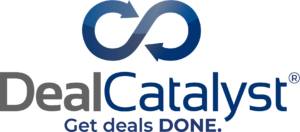January 21, 2025 - On January 15th, the LSTA hosted a webinar, “Cooperation Agreements 101: Building Blocks, Fundamental Issues and Latest Trends”, presented by Alston & Bird Partners, Stephen Blank, Matthew D. Kent, and Ken Rothenberg and Jennifer Kotzen, Vice President, Assistant General Counsel, JPMorgan Chase & Co.
A cooperation agreement is often a foundational step upon which a liability management transaction is devised, and it positions a subset of lenders to negotiate directly with the company, often to the detriment of other lenders. At its core, a cooperation agreement is an agreement amongst an ad hoc group of lenders whereby such lenders band together with the goal of obtaining a favorable transaction with a stressed/distressed company involving such company’s indebtedness.
Under a cooperation agreement, an entity agrees it will not enter a transaction away from the group and will only enter into an agreement with the group. However, an entity that is part of a cooperation agreement is not required to participate in an “approved transaction”. Notably, the company is not part of the cooperation agreement.
Cooperation agreements are often a predecessor step to a transaction support agreement or an in-court restructuring support agreement. Under a cooperation agreement, no term sheet has been developed or agreed upon with the company relating to some type of restructuring of the company’s indebtedness.
In part, cooperation agreements have become an important tool for syndicate lenders holding loans under credit agreements to protect themselves from being on the wrong end of a non-pro rata liability management transaction. Non-pro rata liability management transactions came into vogue during the onset of the pandemic in 2020 and often resulted in tremendous disparity on returns for participating lenders versus excluded/non-participating lenders. Cooperation agreements typically provide for pro rata treatment on the underlying transaction agreed upon for participating lenders in respective tranches/facilities. The core point of protection is that an entity should be part of coop group to minimize the risk of being left behind as an excluded lender.
After reviewing the key provisions of the antitrust legislation in the US, the panelists cautioned that this is an area where the agreement could potentially be considered one amongst competitors. But these agreements really do facilitate pro-competitive transactions. The key takeaway from this part of the presentation is for parties to involve their counsel and this will ensure that the cooperation agreement is drafted correctly and counsel will ensure that you then stay on point and don’t stray into any area where you could violate antitrust laws.
The panelists also discussed the transfer provisions of cooperation agreements (who monitors compliance with these provisions) and other key provisions, including the definition of “Required Holders”, amendments and confidentiality. They concluded with a discussion of the impact of the 5th Circuit Serta & NY App Div Mitel Decisions, and the general pros and cons of entering into these agreements. This is an excellent presentation, and I urge our members to listen to the replay if they were not able to join the webinar. Click here for the slides and replay.






